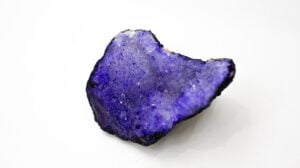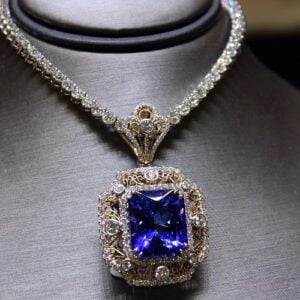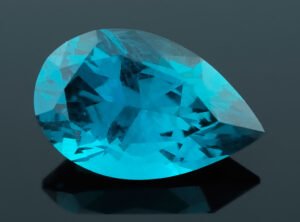What Are The Blue Gemstones In Thailand?
What Are The Blue Gemstones In Thailand? Thailand is a land known for its captivating beauty, abundant natural resources, and rich cultural heritage. But amidst its treasures lies a mesmerizing mystery – the Blue gemstones that have intrigued gem enthusiasts and locals alike.
These precious stones, with their radiant hue and enchanting allure, hold a special place in Thai history and culture. From the vibrant blue sapphires that symbolize wisdom and nobility to the mystical blue topaz that signifies wealth and success, these gemstones carry tales of centuries-old traditions and tales yet to be discovered.
Join us as we journey into the depths of Thailand’s gemstone realm and unravel the secrets behind these stunning blue treasures. Blue gemstones are a popular choice for jewelry enthusiasts around the world, and Thailand is known for producing some of the most stunning blue gemstones available. From the deep blue hues of sapphire to the vibrant shades of blue topaz, there is a wide variety of blue gemstones to choose from.
In this article, we will explore the different types of blue gemstones found in Thailand, as well as their characteristics, origin, mining process, color variations, and popular uses. Whether you’re a gemstone collector or simply curious about the beauty of blue gemstones, this article will provide you with all the information you need. https://lotusgemology.com/
Types of Blue Gemstones in Thailand
Sapphire
Sapphire is one of the most desirable gemstones, known for its stunning blue color and durability. It is a variety of the mineral corundum and gets its blue color from trace amounts of iron and titanium. Sapphire is found in different parts of Thailand, including Chanthaburi and Kanchanaburi, and is highly valued for its vibrant blue color and excellent clarity. In addition to its beauty, sapphire is also known for its durability, ranking 9 on the Mohs scale of hardness. This makes it a perfect gemstone for everyday wear, such as engagement rings and pendants.
Blue Topaz
Blue topaz is a radiant gemstone that comes in a variety of shades of blue, ranging from pale sky blue to deep Swiss blue. It is a member of the silicate mineral family and is often associated with feelings of peace and tranquility. Blue topaz is commonly found in Thailand, particularly in the Phrae region, and is known for its impressive clarity and brilliance. With a ranking of 8 on the Mohs scale, blue topaz is relatively hard and resistant to scratches, making it ideal for jewelry that is worn frequently.
Blue Zircon
blue zircon is a captivating gemstone known for its intense blue color and exceptional brilliance. Unlike other blue gemstones, blue zircon is a natural gemstone that can be found in Thailand, specifically in the Bo Rai region. It is a member of the nesosilicate mineral group and derives its dazzling blue color from heat treatment. Blue zircon is highly valued for its unique combination of color, brilliance, and transparency. With a Mohs hardness of 6-7.5, blue zircon is a relatively soft gemstone that requires careful handling and maintenance.
Blue Apatite
blue apatite is a lesser-known gemstone that exhibits a beautiful range of blue shades, from light blue to a deep teal. It is a phosphate mineral that can be found in various regions of Thailand, including Chanthaburi and Kanchanaburi. Blue apatite is prized for its unique coloration and is often used as an accent stone in jewelry. With a hardness of 5 on the Mohs scale, blue apatite requires gentle care to prevent scratching or damage.
Aquamarine
Aquamarine is a gemstone known for its captivating blue color, reminiscent of the clear waters of the ocean. It belongs to the beryl mineral family and gets its soothing blue hue from trace amounts of iron. While aquamarine is not typically found in Thailand, it is often imported and used in Thai jewelry designs. With a ranking of 7.5-8 on the Mohs scale, aquamarine is relatively durable and can be used in various jewelry pieces, including rings, earrings, and necklaces.
Characteristics of Blue Gemstones
Color
The color of blue gemstones can vary significantly, ranging from pale and icy blues to deep and vibrant hues. Some gemstones, such as sapphires, exhibit a pure blue color, while others, like blue topaz, can have different variations and shades of blue. When evaluating the color of blue gemstones, factors such as hue, tone, and saturation are taken into consideration. The most sought-after blue gemstones are those with a vivid and saturated blue color.
Clarity
Clarity refers to the presence of inclusions or flaws within a gemstone. Blue gemstones with high clarity are preferred, as they allow light to pass through the stone unobstructed, resulting in optimal brilliance and sparkle. However, it is worth noting that some gemstones, such as blue zircon, may naturally have more inclusions due to their unique formation process.
Cut
The cut of a blue gemstone plays a crucial role in enhancing its beauty and brilliance. Well-cut gemstones reflect light in a way that maximizes their sparkle and color. Different gemstones may be cut in various shapes, including round, oval, pear, and princess cuts. The choice of cut depends on the gemstone’s natural characteristics and the desired final look.
Hardness
The hardness of a blue gemstone determines its durability and resistance to scratches. Gemstones with a higher ranking on the Mohs scale are generally more durable and suitable for everyday wear. For example, sapphires rank 9 on the Mohs scale, making them highly resistant to scratches and ideal for jewelry that is worn daily. On the other hand, gemstones like blue apatite, with a hardness of 5, require extra care to prevent damage.
Sapphire
Origin and Mining
Sapphires have been mined in Thailand for centuries. The country has several known deposits, with Chanthaburi and Kanchanaburi being the most notable regions for sapphire mining. The mining process involves extracting gem-bearing gravel from the earth and then using various techniques to separate the gemstones from the surrounding materials. Artisanal miners and large-scale mining operations both contribute to Thailand’s sapphire industry.
Color and Varieties
Sapphires come in a variety of colors, but the most highly prized and sought-after is the rich blue hue. The intensity of the blue can range from pale sky blue to deep royal blue. While blue sapphires are the most well-known, sapphires can also be found in other colors, including yellow, pink, purple, and green. These variations are known as fancy sapphires, and each color has its own unique charm.
Properties and Uses
Sapphires are known for their durability, ranking as one of the hardest gemstones with a 9 on the Mohs scale. This makes them suitable for various types of jewelry, including engagement rings, earrings, and necklaces. Sapphires are also associated with wisdom, loyalty, and nobility, making them a popular choice for those seeking meaningful and symbolic jewelry pieces.
Blue Topaz
Origin and Mining
Blue topaz is found in different parts of Thailand, with the Phrae region being a notable source. The mining process involves extracting the topaz crystals from the earth and then cutting, shaping, and polishing them into the desired gemstone shapes. Mining techniques vary depending on the size and location of the deposits, with both large-scale and small-scale mining operations contributing to the industry.
Color and Varieties
Blue topaz can be found in various shades of blue, ranging from pale sky blue to deep Swiss blue. The gemstone’s color is typically created through a combination of heat treatment and irradiation. The treatment enhances the natural color of the topaz, resulting in the vibrant and captivating blue shades that are highly sought after. Blue topaz can also exhibit different cuts and shapes, allowing for a wide range of design possibilities.
Properties and Uses
Blue topaz is known for its excellent clarity and brilliance. It is a relatively hard gemstone with a ranking of 8 on the Mohs scale, making it durable enough for everyday wear. Blue topaz is often used in various types of jewelry, including rings, earrings, and pendants. The gemstone is believed to promote calmness, relaxation, and emotional healing, making it a popular choice for those seeking jewelry with a soothing effect.
Blue Zircon
Origin and Mining
Blue zircon is a natural gemstone that can be found in the Bo Rai region of Thailand. The mining process involves extracting zircon crystals from the earth and then cutting and polishing them to bring out their unique beauty. The blue color of zircons is typically achieved through heat treatment. It is worth noting that blue zircons may have more inclusions compared to other gemstones, which is considered part of their natural character.
Color and Varieties
Blue zircons, as the name suggests, are characterized by their stunning blue color. The intensity of the blue can vary, ranging from a pale sky blue to a deep royal blue. Blue zircons are also known for their high refractive index, which contributes to their exceptional brilliance and sparkle. While blue is the most popular color, zircons can also be found in other colors such as yellow, green, and red.
Properties and Uses
Blue zircon is a gemstone known for its striking beauty and brilliance. With a hardness of 6-7.5 on the Mohs scale, blue zircon requires careful handling and maintenance to prevent damage. It is often used in various types of jewelry, including rings, earrings, and bracelets, and can add a touch of glamour to any outfit. Blue zircon is also believed to possess healing properties, promoting emotional well-being and energy flow.
Blue Apatite
Origin and Mining
Blue apatite is found in different regions of Thailand, including Chanthaburi and Kanchanaburi, where it is mined through both artisanal and large-scale mining operations. The gemstone is usually extracted from the earth as part of a phosphate ore and then carefully cut and polished to reveal its vibrant blue color. The mining process requires careful extraction to ensure the preservation of the gemstone’s natural character.
Color and Varieties
Blue apatite is known for its range of blue shades, from light blue to deep teal. The gemstone’s color can vary depending on the composition of trace elements present during its formation. Blue apatite can exhibit different levels of transparency, with some stones being more translucent than others. In addition to blue, apatite can also be found in various other colors, including green, yellow, and pink.
Properties and Uses
Blue apatite is favored for its unique coloration and is often used as an accent stone in jewelry. With a hardness of 5 on the Mohs scale, blue apatite requires gentle care to avoid scratching or damage. It is typically used in jewelry pieces such as necklaces, earrings, and bracelets. Blue apatite is believed to have metaphysical properties, including enhancing clarity of thought and promoting personal growth.
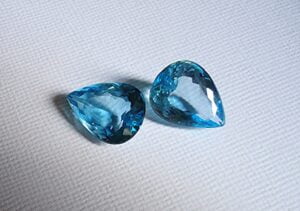
Aquamarine
Origin and Mining
While aquamarine is not typically found in Thailand, it is often imported and used in Thai jewelry designs. Aquamarine is mined in various parts of the world, including Brazil, Nigeria, and Russia. The gemstone is usually extracted from mines and then carefully selected and cut to enhance its unique blue color and natural crystal formations. Aquamarine mining can involve both manual labor and large-scale operations, depending on the location.
Color and Varieties
Aquamarine is renowned for its captivating blue color, which ranges from pale blue to a deep blue that resembles the clear waters of the ocean. The gemstone’s color is attributed to trace amounts of iron present during its formation. Aquamarine can be found in various shapes and cuts, with each showcasing the gemstone’s natural brilliance and transparency. While blue is the most coveted color, aquamarine can also be found in greenish-blue hues.
Properties and Uses
Aquamarine is a gemstone known for its beauty and symbolism. With a ranking of 7.5-8 on the Mohs scale, aquamarine is relatively durable and resistant to scratches. This makes it suitable for various types of jewelry, including rings, earrings, and necklaces. Aquamarine is often associated with calming energy, communication, and clarity of thought. It is a popular choice for those seeking jewelry that embodies a sense of tranquility and serenity.
Famous Blue Gemstone Locations in Thailand
Chanthaburi
Chanthaburi is a province in Thailand renowned for its gemstones, including blue sapphires, apatite, and aquamarine. The region is known for producing high-quality gemstones, and its gem markets attract gemstone enthusiasts from around the world. Chanthaburi’s mining industry supports the local economy and contributes to Thailand’s status as a major gemstone exporter.
Kanchanaburi
Kanchanaburi is another prominent gemstone mining region in Thailand. The region is known for its rich deposits of blue sapphires and apatite, among other gemstones. Kanchanaburi’s gem markets offer a wide array of gemstones to choose from, and visitors can explore the local gem mines to witness the mining process firsthand. Kanchanaburi’s gem industry is an essential part of the region’s cultural heritage and economy.
Phrae
Phrae is a province in northern Thailand that is known for its blue topaz mines. The region’s gemstones exhibit stunning blue hues, ranging from pale sky blue to deep Swiss blue. Phrae’s mining industry plays a significant role in the local economy, with gemstones being a valuable export. Visitors can explore the gem markets in Phrae to admire the range of blue topaz and other gemstones available.
Bo Rai
Bo Rai is a district in the Trat province of Thailand that is famous for its blue zircon mines. The region’s blue zircons captivate with their intense blue color and remarkable brilliance. Bo Rai’s mining industry contributes to Thailand’s reputation as a hub for high-quality gemstones. Those interested in blue zircons can visit the local gem markets to see the exquisite range of blue gemstones available.
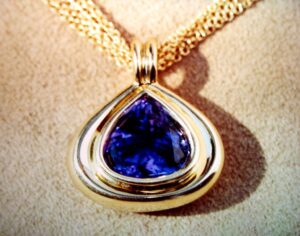
Caring for Blue Gemstones
Cleaning
To keep blue gemstones looking their best, regular cleaning is necessary. Gently clean gemstone jewelry using mild soap, warm water, and a soft brush or cloth. Avoid using harsh chemicals or rigorous scrubbing, as this can damage the gemstones or their settings. It is also advisable to remove jewelry before engaging in activities that may cause damage, such as exercising or cleaning with chemicals.
Storing
Proper storage is essential to prevent damage to blue gemstone jewelry. Store gemstone pieces separately to prevent scratches and tangling. Use padded jewelry boxes or soft cloth pouches to protect the gemstones from external damage. Additionally, avoid exposing gemstone jewelry to direct sunlight or extreme temperature changes, as this can affect their color and overall condition.
Avoiding Damage
While blue gemstones can be durable, certain precautions should be taken to avoid damage. Avoid exposing gemstone jewelry to harsh chemicals, such as cleaning agents and beauty products. Remove jewelry before engaging in activities that may cause impact or scratches, such as sports or heavy lifting. It is also advisable to have gemstone jewelry inspected and professionally cleaned regularly to maintain its beauty and integrity.
The Value of Blue Gemstones
Factors Affecting Value
Several factors influence the value of blue gemstones. The most significant factors include color, clarity, cut, and carat weight. The intensity and hue of the blue color, as well as its saturation and consistency, play a crucial role in determining value. Clarity refers to the presence of inclusions or flaws within the gemstone, with higher-clarity gemstones being more valuable. Additionally, a well-cut gemstone that maximizes its brilliance and sparkle will command higher value.
Pricing and Grading
Blue gemstones are typically priced based on their quality and rarity. Gemstones that exhibit exceptional color, clarity, and cut will generally command a higher price. Various gemological laboratories provide grading reports that assess a gemstone’s quality and characteristics.
These reports offer transparency and provide buyers with confidence in their purchase. When considering purchasing blue gemstones, it is advisable to seek reputable jewelers who can provide reliable information and certification. https://mauragemsandjewellery.org/what-grade-ruby-is-best/
In conclusion, Thailand is a treasure trove of blue gemstones, offering a wide variety of choices for gemstone enthusiasts and collectors alike. From the timeless beauty of sapphires to the vibrant allure of blue topaz and zircon, these gemstones showcase Thailand’s rich geological heritage.
Whether you’re seeking a piece of jewelry to celebrate a special occasion or simply appreciate the natural beauty of gemstones, the blue gemstones of Thailand are sure to captivate with their stunning colors and unique properties. Remember to care for your gemstone jewelry properly and seek the guidance of reputable jewelers to ensure the authenticity and quality of your purchase.

